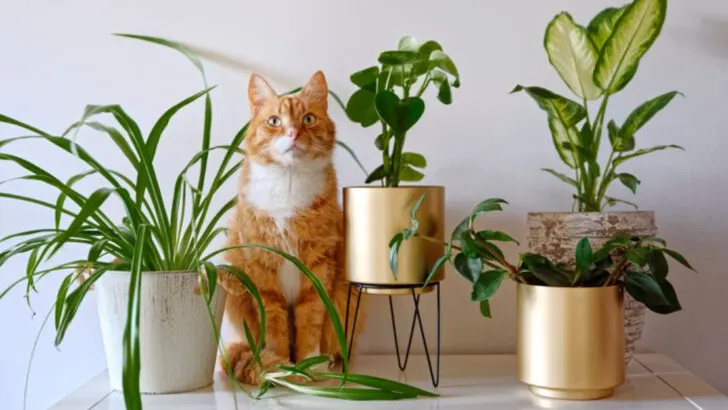Sometimes the plants we love most can quietly put our pets at risk. At Plantisima, we believe that being a plant lover and a pet parent shouldn’t come with fear—but it should come with awareness. Many popular houseplants are toxic to cats and dogs, and recognizing the warning signs early can make all the difference.
In this article, we share 15 common symptoms that may indicate your pet has come into contact with a toxic plant. From subtle behavioral changes to serious physical reactions, knowing what to look for can help you act fast and protect your furry companion.
To our Plantisima readers who cherish both greenery and four-legged family members—this guide is a must-read. Because loving plants means also knowing how to keep them—and your pets—safely thriving under the same roof.
Vomiting and Nausea

Have you ever noticed your furry friend retching after a seemingly normal day? Vomiting can be a glaring indicator that something isn’t right. Pets, much like humans, tend to suffer from nausea when they’ve ingested something toxic. If your pet suddenly begins to vomit without any changes in diet or routine, it’s a signal worth investigating.
A plant they nibbled on could be the culprit. While occasional vomiting may not be alarming, persistent episodes demand attention. Always consider recent activities and any new plants in the vicinity.
Lethargy and Fatigue
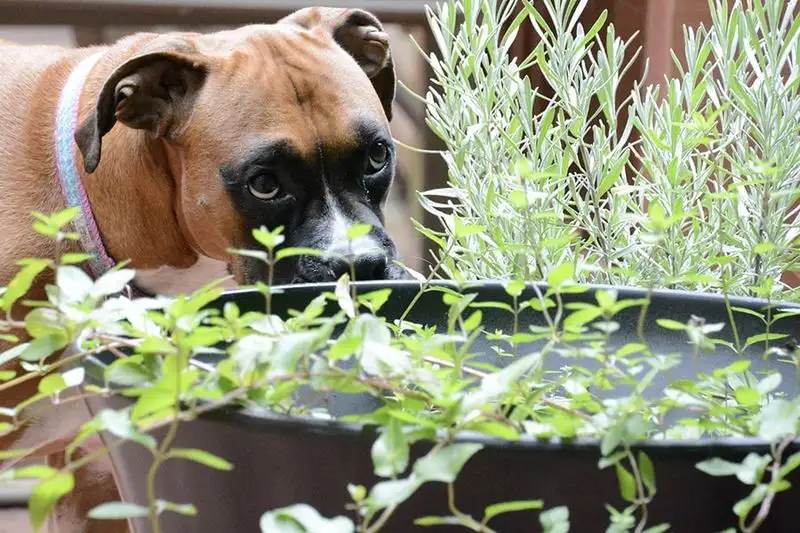
Pets are known for their playful energy, so when your pet seems unusually tired, it’s time to take note. Lethargy can often mask a deeper issue, especially if your pet is typically active. A toxic plant might be sapping their energy.
Imagine your pet suddenly lounging around, uninterested in their favorite toys or activities. This unusual behavior might link back to an encounter with a harmful plant. Monitoring their energy levels can provide crucial insights into their well-being.
Diarrhea
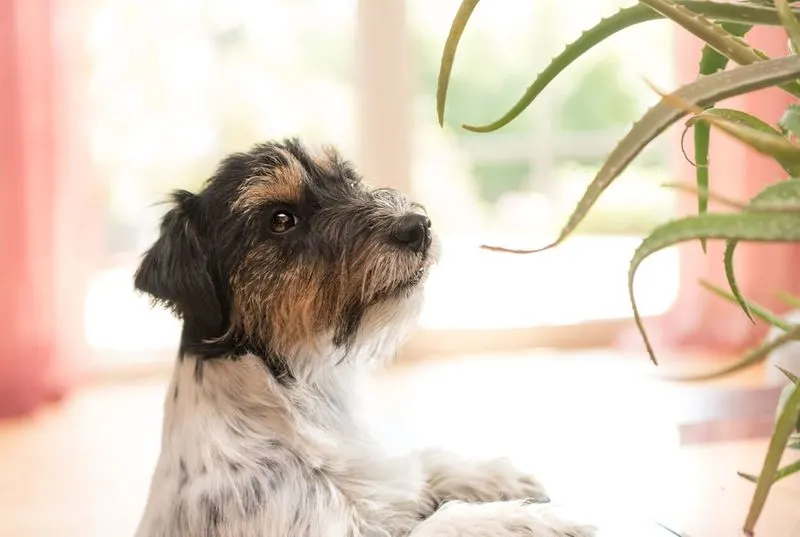
Imagine your pet making frequent trips to their toilet spot, leaving you puzzled. Diarrhea can be a messy affair but, more importantly, a significant sign of plant toxicity. Pets’ digestive systems react to harmful substances, resulting in loose stools.
Though it’s common for pets to have occasional stomach upsets, consistent diarrhea, especially after exploring the garden, is a red flag. Be mindful of any recent additions to your plant collection and keep a keen eye on their potty habits.
Drooling and Salivation
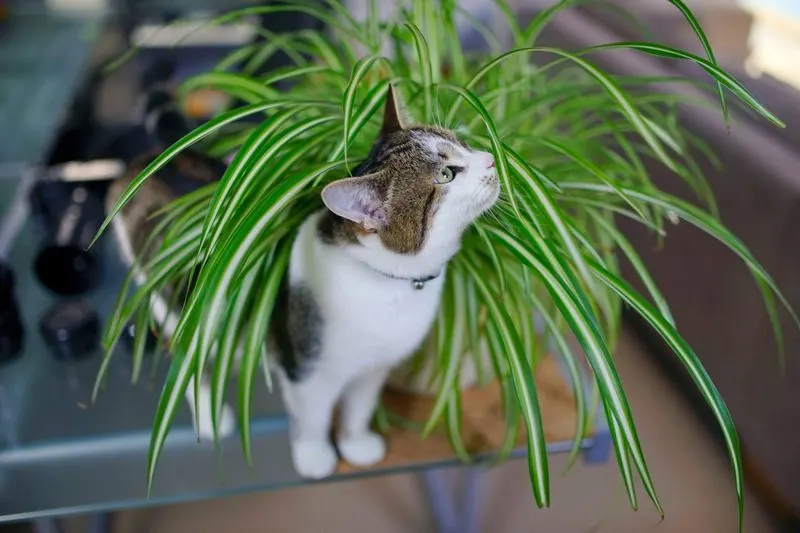
An unexpected dribble can be more telling than you’d think. If your pet starts drooling excessively, it might not just be hunger for their next meal. Certain plants contain compounds that trigger increased salivation.
While some pets naturally drool more than others, a sudden increase can hint at an underlying issue. This symptom is often overlooked but can be one of the clearest signs that your pet encountered a toxic plant. Observing when and where this happens can help trace the source.
Loss of Appetite
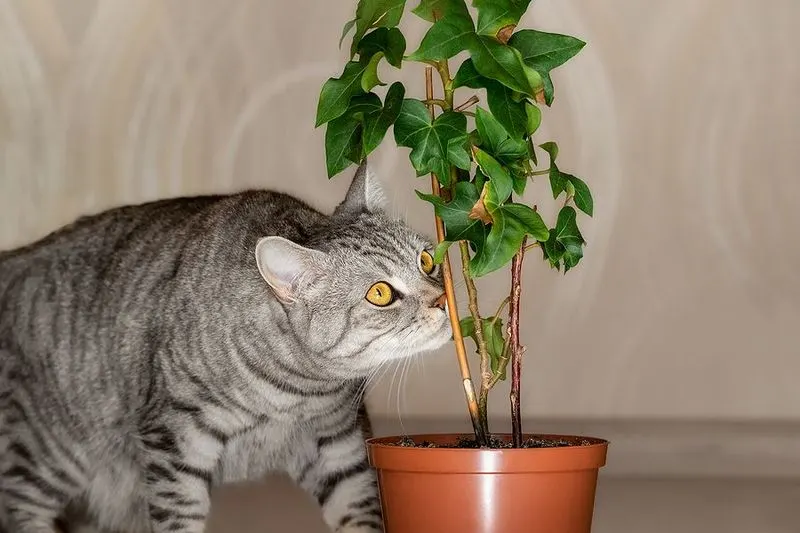
A disinterested glance at their favorite meal can be quite alarming. Loss of appetite is a strong indicator that something could be amiss. When pets avoid food, it often signals underlying health concerns, including reactions to toxic plants.
If mealtime excitement turns into indifference, consider what else might have changed in their environment. The presence of certain plants could be affecting their desire to eat. This behavioral shift is a notable clue worth exploring.
Excessive Thirst
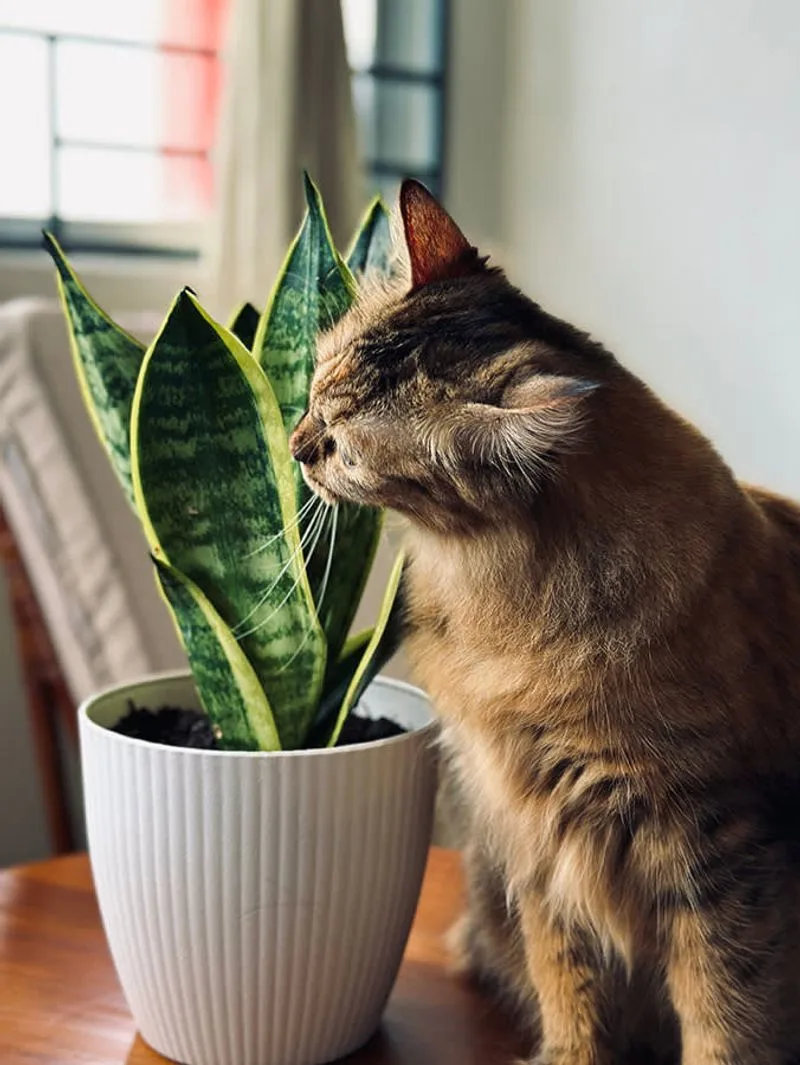
A parched pet lapping water more than usual might be experiencing more than just a hot day. Increased thirst is another subtle sign of distress. Toxic plants can lead to dehydration as the body tries to rid itself of harmful substances.
While staying hydrated is crucial, excessive thirst paired with unusual behavior should prompt a closer look. Monitor their water intake and consider any recent dietary or environmental changes, including new plant arrivals.
Tremors or Shaking
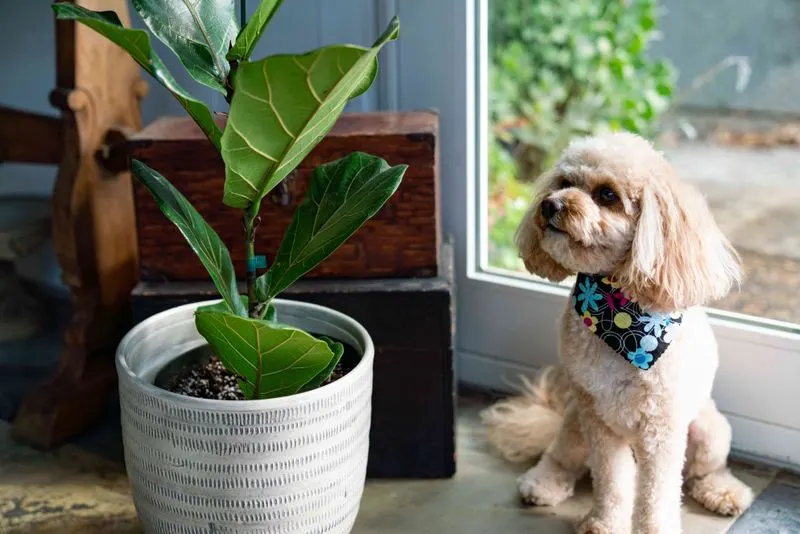
A quiver here and a tremble there, could indicate more than just a chill. Tremors in pets can be alarming, often signaling neurological disturbances. Some plants contain toxins that interfere with the nervous system, causing these involuntary movements.
If your pet begins to shake without any apparent reason, it’s essential to recall their recent environment interactions. Identifying potential toxic plant exposure can aid in swift action and treatment.
Pawing at the Mouth
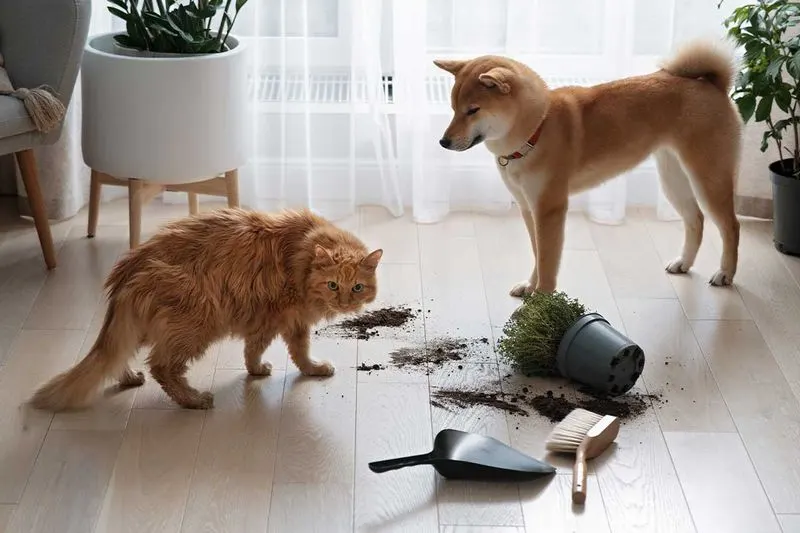
Ever seen your pet acting like they have something stuck in their teeth? Pawing at the mouth can indicate irritation or discomfort. When a pet comes into contact with a toxic plant, their mouths may burn or itch as a reaction.
This behavior, coupled with other symptoms, highlights the need to inspect their environment. Observing what they’ve interacted with lately, especially new plants, can provide the answers you need.
Respiratory Distress
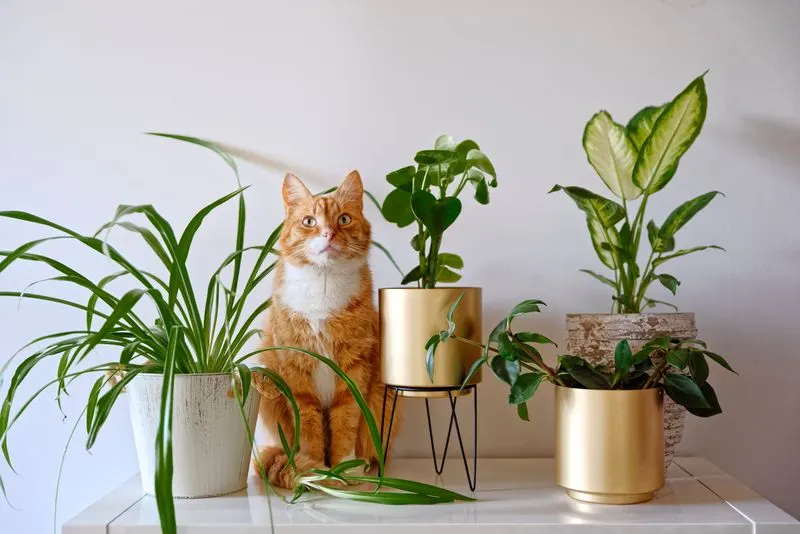
Heavy breathing or coughing in pets can be more than just a need for fresh air. Respiratory issues may arise when they inhale or ingest harmful plant substances.
If your pet displays breathing difficulties, it’s crucial to assess their surroundings. Certain plants release irritants that affect the respiratory system, making it hard for them to catch their breath. Immediate attention to their environment can prevent further complications.
Skin Irritation
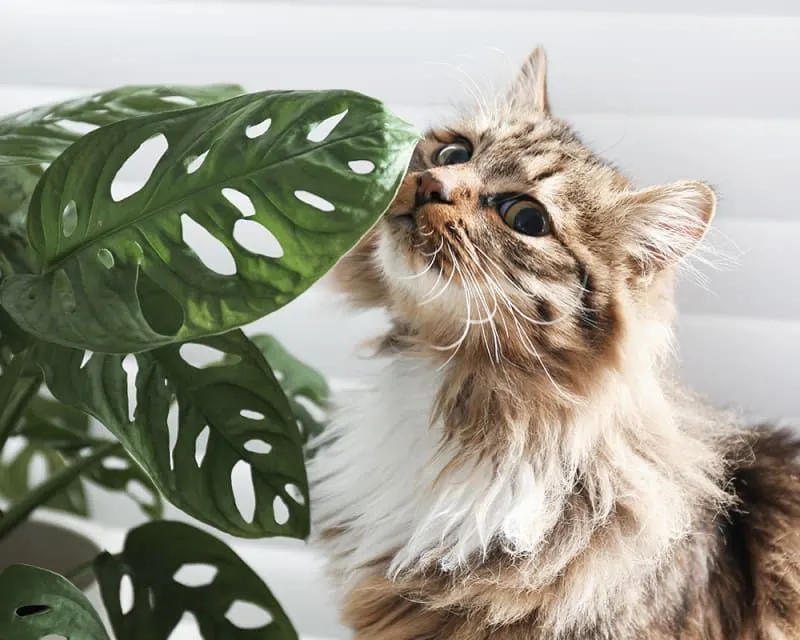
Itchy skin and relentless scratching might have you considering fleas, but plants could also be the cause. Certain toxic plants release substances that irritate the skin, leading to redness or rashes.
If your pet suddenly exhibits skin issues, examine their recent outdoor adventure or new indoor plants. Identifying the culprit early can alleviate their discomfort and restore their usual playfulness.
Swelling or Inflammation
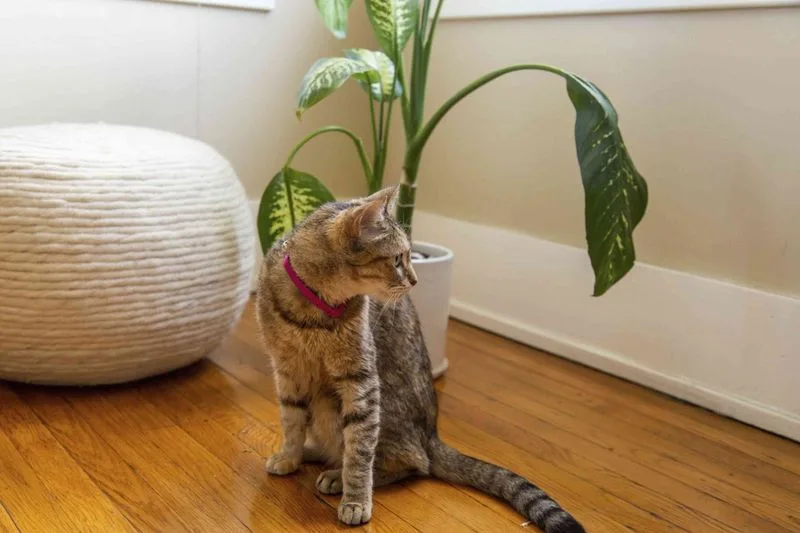
Noticeable changes in your pet’s appearance, such as swelling, should catch your attention. Inflammation often results from allergic reactions or exposure to toxins.
If your pet’s face or limbs become puffy without injury, consider the possibility of contact with a toxic plant. Observing these changes and correlating them with recent plant exposure can guide your next steps.
Seizures

Seizures are frightening for any pet owner to witness. Toxic plants can sometimes trigger such severe reactions. These episodes indicate a significant neurological disturbance, often requiring immediate veterinary attention.
If a normally healthy pet suddenly exhibits seizure activity, consider their recent environmental interactions. Identifying exposure to potentially toxic plants can be critical in providing timely care.
Unusual Vocalizations
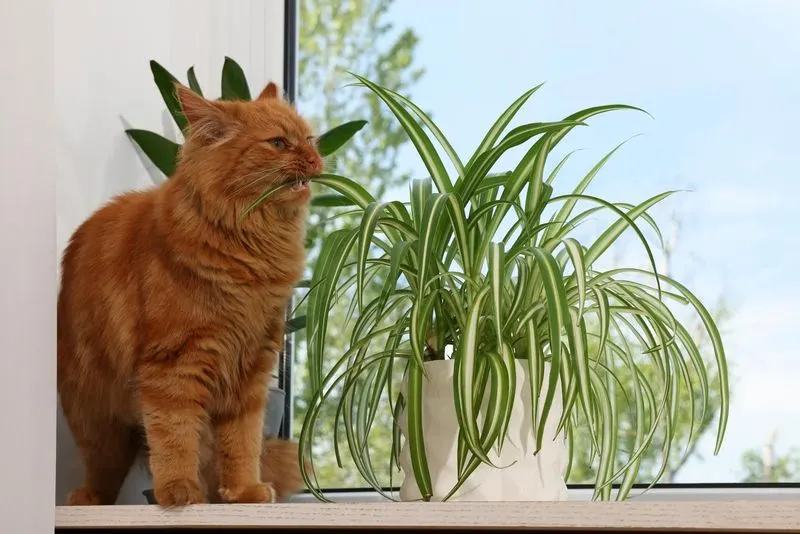
A chatty pet suddenly becoming more vocal might be trying to communicate discomfort. Unusual vocalizations can be a distress signal, especially if accompanied by other behavioral changes.
When your pet’s chatter turns into cries or whines, and there’s no clear reason, think about recent changes in their environment. New plant additions might be the root cause of their discomfort.

